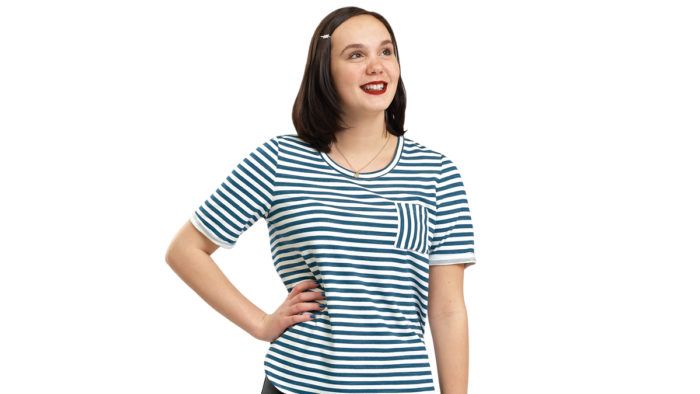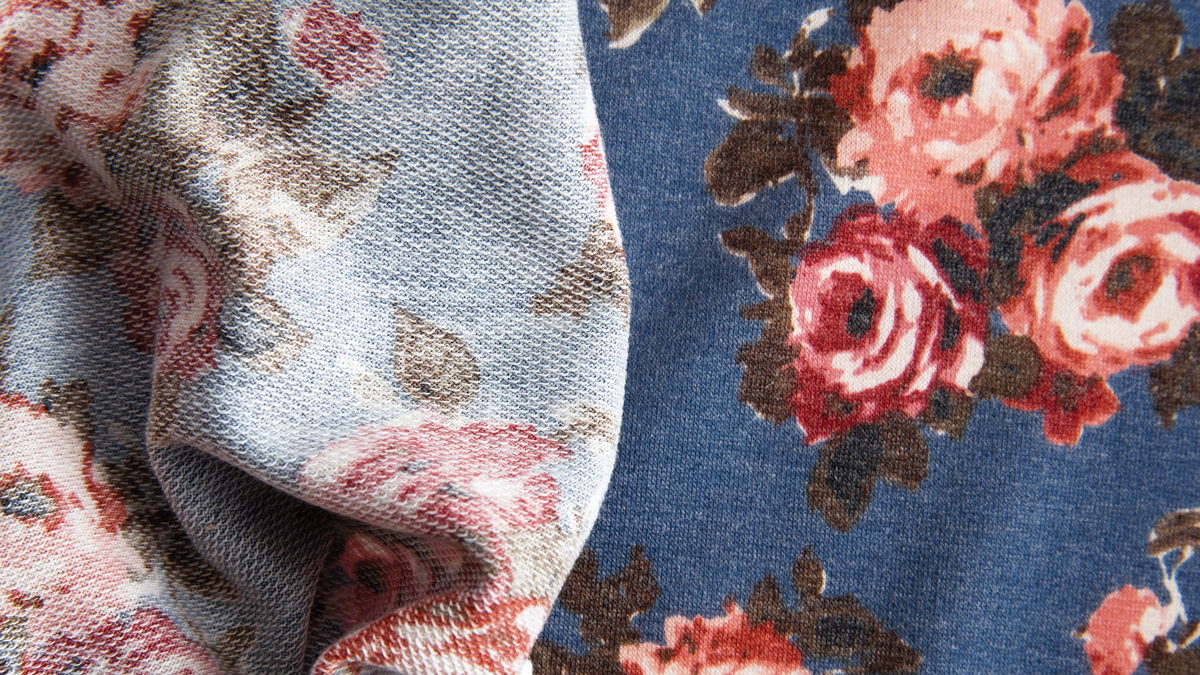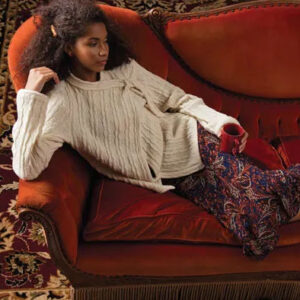How to Sew with Terrycloth
Lofty loops form a comfortable, absorbent textile
Typically the go-to fabric for towels and bathrobes, terrycloth has desirable characteristics for a variety of garments. Standard terrycloth has a looped surface on both sides. French terry has a knit side and a looped side. It is soft to the touch and has a moderate level of stretch. Stretch terry is softer and more pliable. It is knit on one side and looped on the other. While terrycloth is typically 100 percent cotton, stretch and French terry are often a blend of cotton and spandex, and many French terry fabrics are made from bamboo.
Terrycloth is available in different weights. Lightweight terrycloth, from 9 ounces to 13 ounces per square yard, can be used for light beach cover-ups, while heavier weights, from 16 ounces to 21 ounces, can be used for towels or bathrobes. French terry is commonly used for sweatshirts and cardigans and is available in fun prints and colors. Stretch terry can be difficult to find but is often used to make baby accessories such as blankets and stuffed animals.
People of all ages find terrycloth comfy and fun to wear, thanks to its soft, loopy construction and cotton-rich fiber content.
Care and handling of terrycloth
Terrycloth is quick to ravel, so plan thoughtfully before working with it.
Preshrink the fabric. Buy an additional 1⁄4 yard for every 2 yards purchased to allow for fabric shrinkage. This fabric must be machine-washed in warm water and machine-dried at regular temperature twice to ensure there is no further shrinkage after cutting.
Use the without-nap layout, double thickness. Pins tear the pattern tissue, so opt for fabric weights instead.
Cut with a rotary cutter or scissors. Serge or overcast all edges immediately to prevent raveling. A four-thread serger stitch is a sturdier finish than a three-thread stitch and is less likely to pull away from the fabric’s edge.
Press well. A steam iron on the cotton setting handles most wrinkles.

Appropriate notions
Pick tools and closures that won’t get overwhelmed by the fabric’s loft.
Interfacing: It is not necessary, as the fabric has enough body on its own.
Thread: Use good-quality cotton or polyester versions.
Needle: Select 80/12 or 90/12 universal machine needle. For French or stretch terry, install a ballpoint needle.
Closure: This fabric is often too thick for zippers. Opt instead for snaps with extralong prongs. Buttons may also be appropriate closures.
Presser foot: A walking or roller foot helps this lofty fabric feed evenly.
Marking: Use Clover Chaco Liner or safety pins.
Technique advice
Keep projects simple, and control raveling for good results.
Pick a stitch. Use a straight stitch for terrycloth, or stretch stitch for French terry or stretch terry.
Set the stitch length. A 3.0-mm stitch works with most weights of terrycloth. Test your stitching on a scrap, and lengthen the stitch if needed.
Stabilize key seams. If your fabric stretches, insert 1⁄4-inch-wide clear elastic into the neckline, shoulder, and waistline seams.
Topstitch the seams. This creates a finish that is less likely to ravel. For French or stretch terry, use a cover stitch or twin needle.
Sew stable buttonholes. Stabilize the buttonhole area with interfacing, cut so the interfacing’s lengthwise grain is parallel to the buttonhole. For the buttonholes, use a size 70/10 jeans or denim needle and water-soluble stabilizer, such as Solvy, between the presser foot and the terrycloth
Eliminate facings whenever possible. Add ribbing or bind the edges with strips of cotton knit, cut on the cross-grain.
Select a hem finish. Serge the raw edge, then turn the edge up 1-1⁄4 inches and topstitch with a twin needle, lengthening stitches to 4.0 mm. A cover-stitched hem also works well with this fabric.

Sources for terrycloth
- Fabric.com
- VeryBaby.com
- Joann stores
- FashionFabricsClub.com
- GinnysFineFabrics.com
- ShannonFabrics.com
- StonemountainFabric.com
Sandra Betzina is the author of All New Fabric Savvy (The Taunton Press, 2017), from which this article is adapted.
View the full article by clicking View PDF below:
View PDF































Log in or create an account to post a comment.
Sign up Log in